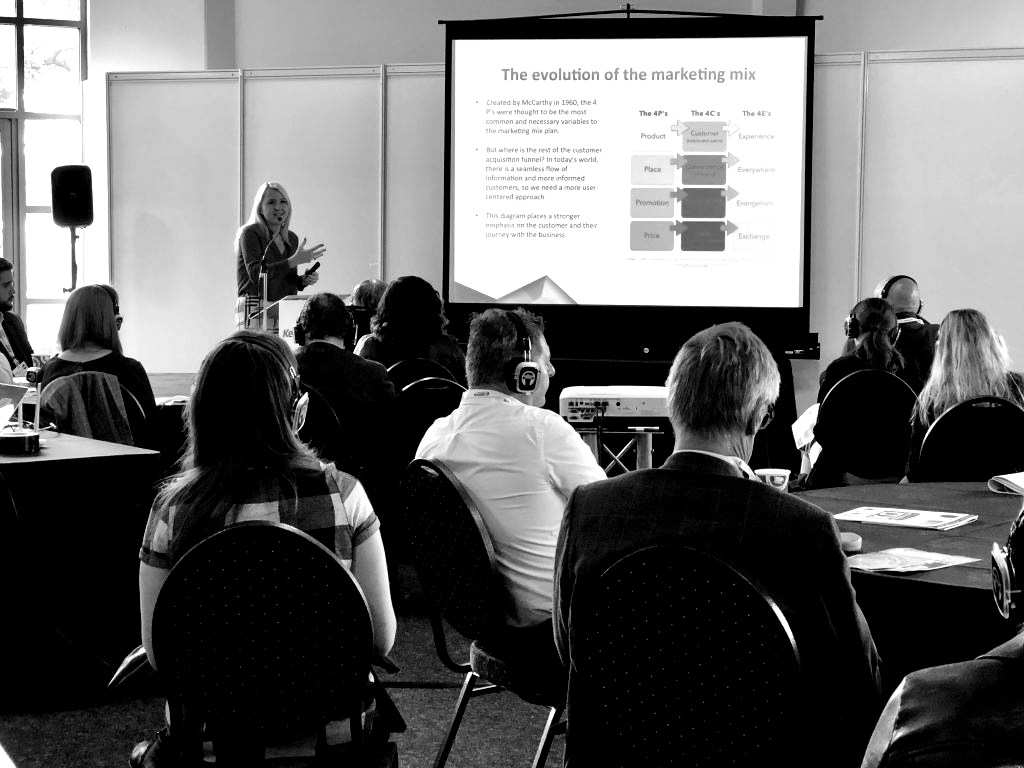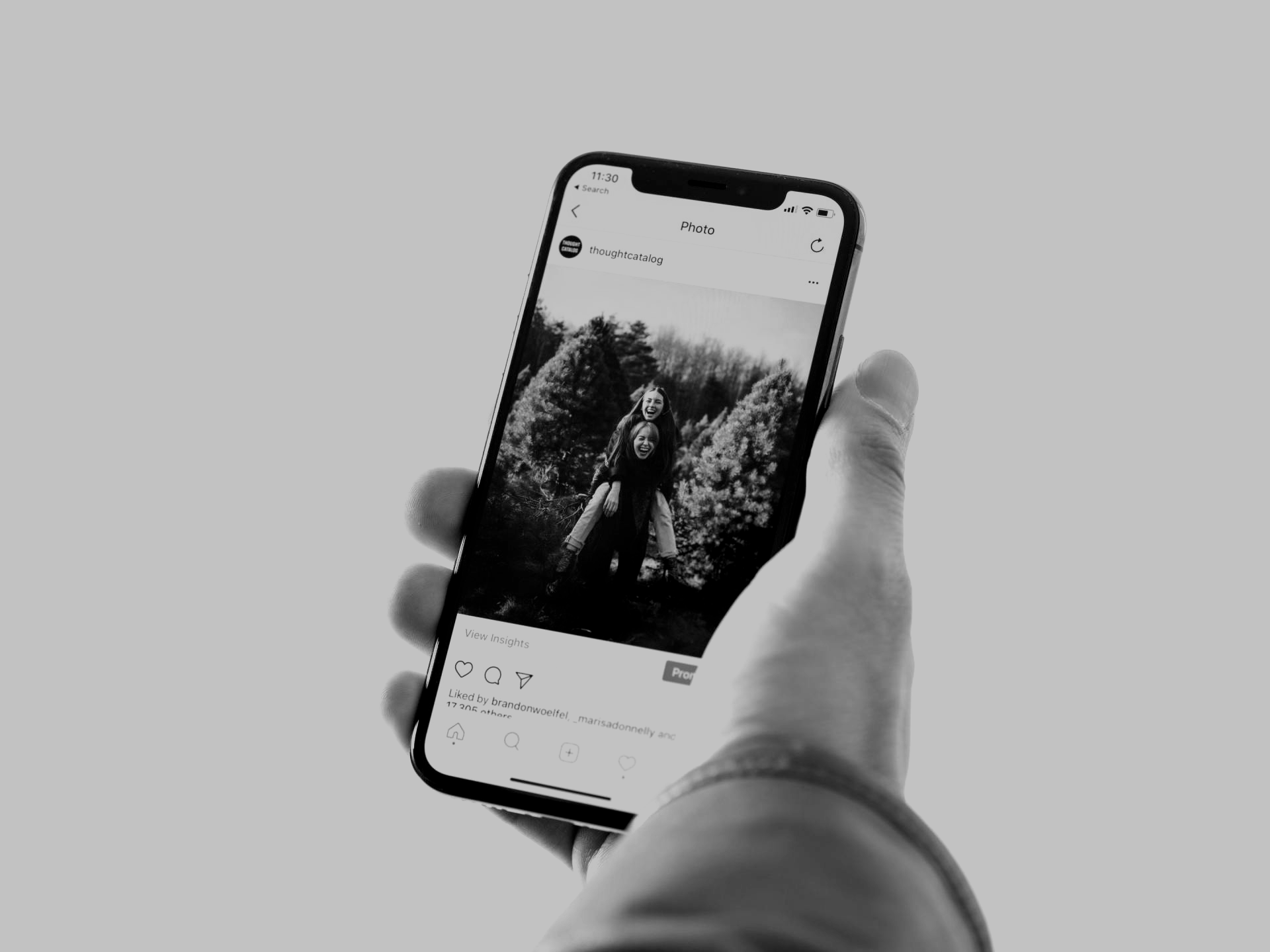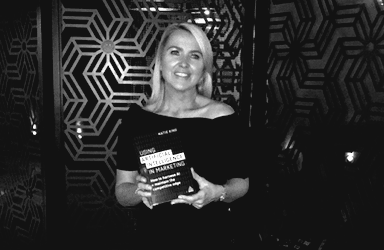Top 3 Mar-Tech Trends to Look Out For (and What They Mean for Your Content!)
It seems like only yesterday when artificial intelligence was touted as the next far-off technology trend looming ahead. Now, AI is everywhere we look, as more and more businesses integrate this technology into their tools and practices. Since the far-off trend of AI wasn’t as far as it may have seemed, many future focused marketers will now be setting their sights on what comes next. Now that AI is here to stay, what might the next big technological disruption be?
Here are three mar-tech advancements you should be on the lookout for, and tips on how they may impact your content.
Smart Signage
Imagine you’re in the tube station when all of a sudden, the advert you’re passing changes to one that seems almost as hand picked just for you. Maybe it’s related to something you were searching for earlier, or it may appear to be plucked directly from your mind. As you keep walking, more signs change to reveal more things you’re interested in. Then, you look behind you and notice them changing again as someone else passes by, their screens displaying something totally different from what was shown to you.
This futuristic concept sounds like something straight out of a sci fi franchise but actually, it isn’t too far off from the mainstream. It’s smart signage, a currently underutilised capability of AI that some are beginning to explore. In the future, with enhanced and generalised use of facial and biometric data, real-time advertising could easily become the norm for Out of House marketing campaigns. Billboards, adverts on public transport, and shop displays may one day be able to pick up our devices and deliver us an in-the-moment advert related to our search histories or location data, which may feel a bit invasive but could also mean more personalised experiences and better advertising for us as customers.
Marketers will have more creative license with the Out of House marketing content they produce, with a more digital focus than what they may currently be accustomed to. The format of this signage will allow for more interactivity, movement, and personalisation than the static advertising we have now.
Web3
It feels like we’ve had the internet for a lifetime, but it’s only been ours for less than 30 years. The ‘World Wide Web’ entered the public domain in 1993, forever reshaping the way we live our lives. Its early days were primitive, with dial-up connections and static webpages as the norm. There were very few content creators at this time. Digital marketing did not exist because advertising was banned in the internet’s early form. Therefore, ‘traditional’ media still dominated the marketing mix. This initial period of the internet’s lifespan is fittingly known as ‘Web1.’
But just as we grow, mature, and evolve with age, so did the internet. ‘Web2’ is how we have primarily known the internet, and how we think of it today. The introduction of JavaScript revolutionised webpages with movement and expanded the possibilities for content. Web2 also saw the rise of social media and various key players in the internet space (think: Google, Facebook, etc.). Content sharing and community building exploded in Web2. We have millions of content creators in Web2, with everyday users having the capability of creating and sharing their own content online. However, those few key players dominate where and how that content is shared. Take Meta, for example. This one company owns three of the top social media platforms: Facebook, Instagram, and WhatsApp. Google, the world’s top search engine, also owns YouTube, which is the second most popular. So, while we have masses of content and creators, only a handful of big players dominate the internet game, which has led to some public mistrust of ‘big tech.’
The next generation of the internet, known as ‘Web3,’ aims to change that by focusing on decentralisation and putting the control back into the hands of creators. It focuses more heavily on experience. Some of the technologies we’re seeing trend now will contribute to this, such as virtual and augmented reality, AI, cryptocurrencies, and so on.
We aren’t fully in Web3 yet, but we are gradually moving in that direction. As it is still early days, there is no clear framework to follow to prepare. The best thing today’s marketers can do to prepare for tomorrow is to begin experimenting with some of the technologies that will shape Web3.
The Metaverse
One early element of Web3 that is growing now is the ‘Metaverse,’ a world created in virtual reality. Many brands are already entering this space. Samsung, Nike, Louis Vuitton, Coca-Cola, Gucci, and Zara already selling their products digitally in the Metaverse. Even Sotheby’s has begun selling digital real estate in this new virtual world.
As the Metaverse grows in popularity, it’s not unfathomable that marketers may soon find themselves marketing non-physical goods and virtual services. The principals of great content will remain the same, prioritising engagement and experience. How you approach these experiences may need adapting for the virtual world. There will likely be a greater focus on audio and video content to create more immersive experiences, but written content will still have its place. It may just take a different form. For example, instead of a blog, a company may create a virtual library in the Metaverse that customers can visit with their avatars in order to get information. The possibilities are truly endless, making this an exciting time for creativity in content creation.
While some of these tech trends are still in their exploratory stages, we learned with AI that those who prepare early gain a competitive edge. If you’re looking for help futureproofing your content strategy, or for an expert team to help you create it, get in touch with us.









